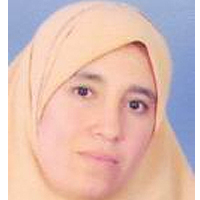Submitral Ventricular Pseudoaneurysm: Unusual and Late Complication of Cardiac Surgery
Published on: 21st January, 2017
OCLC Number/Unique Identifier: 7317646407
Despite the background of advances in cardiac surgery procedures for higher risk population, the postoperative complication has already been a challenge for cardiac surgeon and Heart-Team. Future perspectives to exceed this challenge could be periodically patient’s follow up and advance diagnostic workup. We describe the diagnosis of a large sub mitral left Ventricle Pseudoaneurysm that was identified in a 59-year-old woman 17 years after she underwent aortic and mitral valve replacement for rheumatic valvular disease
A rare variant of the radial artery was discovered during a pseudoaneurysm of the brachial artery in a hemodialysis patient
Published on: 2nd August, 2022
The radial artery shows great anatomical variability with respect to its origin [1]. Generally, its origin is located in the cubital fossa at the level of the neck of the radius [2]. However, the artery may have a high origin from the brachial artery or even the axillary artery [1].
Superior Gluteal Artery Pseudoaneurysm following a Periacetabular Osteotomy
Published on: 1st March, 2024
Periacetabular Osteotomy (PAO) is the gold standard for the treatment of hip dysplasia or acetabular retroversion. Due to the proximity of intra-pelvic arteries, there is a risk of iatrogenic vascular injuries, which can present with a delay and should be part of the differential diagnosis of significant pain following a PAO. We present the case of a never-described vascular injury following a periacetabular osteotomy in a 25-year-old woman who presented with gluteal pain 3 weeks after surgery. A delayed diagnosis of a pseudoaneurysm of the superior gluteal artery was made and successfully treated by embolization. The lesion is most probably related to the tip of a screw or to the drilling process.
Post-catheterization Common Femoral Artery Pseudoaneurysm in a Patient with a Mechanical Mitral Valve Requiring Anticoagulation: A Case Report
Published on: 15th July, 2024
Iatrogenic femoral pseudoaneurysms are a rare complication of transfemoral vascular access. We present a case of a 65-year-old woman with a mechanical mitral valve requiring warfarin, who developed a femoral pseudoaneurysm four days after cardiac catheterization with femoral access. The patient developed a 17 x 10 x 17 cm rectus sheath hematoma and was treated with ultrasound-guided thrombin injection. Anticoagulation was held for three days while the patient was monitored for further bleeding and later restarted based on shared decision-making, given the risk of valve thrombosis. There are few guidelines regarding the re-initiation of anticoagulation in high-risk bleeding patients with mechanical mitral valves. Non-invasive coronary computed tomography angiography should be considered in patients on anticoagulation who require non-emergent cardiac ischemic evaluation.




